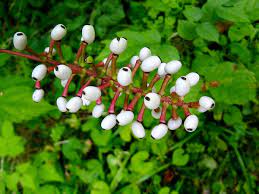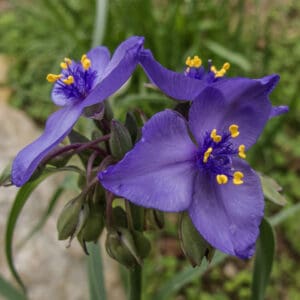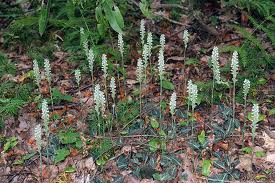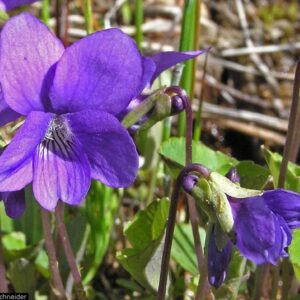Actaea pachypoda, Dolls Eyes, Native Bare Root Perennials
$8.00
260 in stock
Actaea pachypoda, Dolls Eyes, Native Bare Root Perennials
(requires a minimum purchase of 5 plants)
5 or more $8.00 each
25 or more $4.00 each
50 or more $2.25 each
300 or more $2.00 each
1000 or more please call.
Wholesale pricing is based on quantity.
For Shipping, Install and additional info please see “About Bare Root“.
Native bare root ferns are dug and shipped while dormant, mid November to early spring.
See all available Native Bare Root Perennials
Order Minimum
There is a minimum order total of $150.00.
before tax (VA residents only) and shipping.
There are NO EXCEPTIONS.
Description
Actaea pachypoda, Dolls Eyes, Native Bare Root Perennial
The Doll’s Eye also known as White Baneberry, Actaea pachypoda, is a herbaceous perennial plant that can reach 2 feet in height. It has toothed bipinnate compound leaves. White dense raceme flowers grow in Springtime. The different fruit of this plant is where it gets its name from Doll’s Eye.
Description
A member of the buttercup family, Actaea pachypoda is a perennial herb forming from a thick rhizome. It will adapt to most growing conditions with the exception of dry soil. It prefers humus-rich moist soil in woodlands and thickets. It is non-aggressive and non-invasive.
This self-seeding perennial can be propagated by sowing the seed collected from the berries. Each berry contains less than 10 seeds. The seeds will germinate the year after sowing and will bloom in the following year. Division can be another means of propagation, the optimum period being in early spring or fall.
The flowers provide pollen but lack nectar. The pollen is collected by short-tongued bees. The berries are eaten by a variety of birds, thereby spreading the seed to other areas. The birds are immune to the toxic effects of the berries.
All parts of this plant are poisonous, mainly the berries and roots. Use caution when planting in an are where children and pets have access.
It can be found growing in forests or other natural areas, such as rich woods, deciduous woodlands, ravines, thinly wooded bluffs, and the bases of bluffs. Being an upland plant, it usually will not be found in wetlands.
Insects, Diseases and Other Plant Problems: All parts of this plant are poisonous. TOXIC ONLY IF LARGE QUANTITIES EATEN. CAUSES SEVERE PAIN IN THE MOUTH IF EATEN!
Genus:
Actaea
Species:
pachypoda
Family:
Ranunculaceae
Life Cycle:
Perennial
Recommended Propagation Strategy:
Division
Seed
Country Or Region Of Origin:
Eastern North America
Distribution:
AL, AR, CT, DE, FL, GA, IA, IL, IN, KS, KY, LA, MA, MD, ME, MN, MO, MS, NC, NE, NH, NJ, NY, OH, OK,, PA, RI, SC, TN, VA, VT, WI, WV
Wildlife Value:
Birds eat the berries. Bees collect the pollen. The seeds are eaten by white-footed mils (mouse) and Red-backed moles.
Play Value:
Attractive Flowers
Attracts Pollinators
Wildlife Food Source
Edibility:
Not edible
Dimensions:
Height: 1 ft. 0 in. – 3 ft. 0 in.
Width: 2 ft. 0 in. – 3 ft. 0 in.
Light:
Dappled Sunlight (Shade through upper canopy all day)
Deep shade (Less than 2 hours to no direct sunlight)
Partial Shade (Direct sunlight only part of the day, 2-6 hours)
Soil Texture:
Clay
High Organic Matter
Loam (Silt)
Sand
Soil pH:
Acid (<6.0)
Soil Drainage:
Good Drainage
Moist
Available Space To Plant:
3 feet-6 feet
Mountains
Piedmont
USDA Plant Hardiness Zone:
3a, 3b, 4b, 4a, 5b, 5a, 6b, 6a, 7a, 7b, 8b, 8a
Related products
-

Tradascantia subaspera, Zig Zag Spiderwort, Native Bare Root Perennial
$8.00 Add to cart -

Goodyera pubescens, downy rattlesnake plantain, Native Bare Root Perennial
$8.00 Add to cart -

Tiarella cordifolia, Foamflower, Wholesale Native Bare Root Perennial
$8.00 Add to cart -

Viola sororia, Common Blue Violet, Native Bare Root Perennial
$4.00 Add to cart




